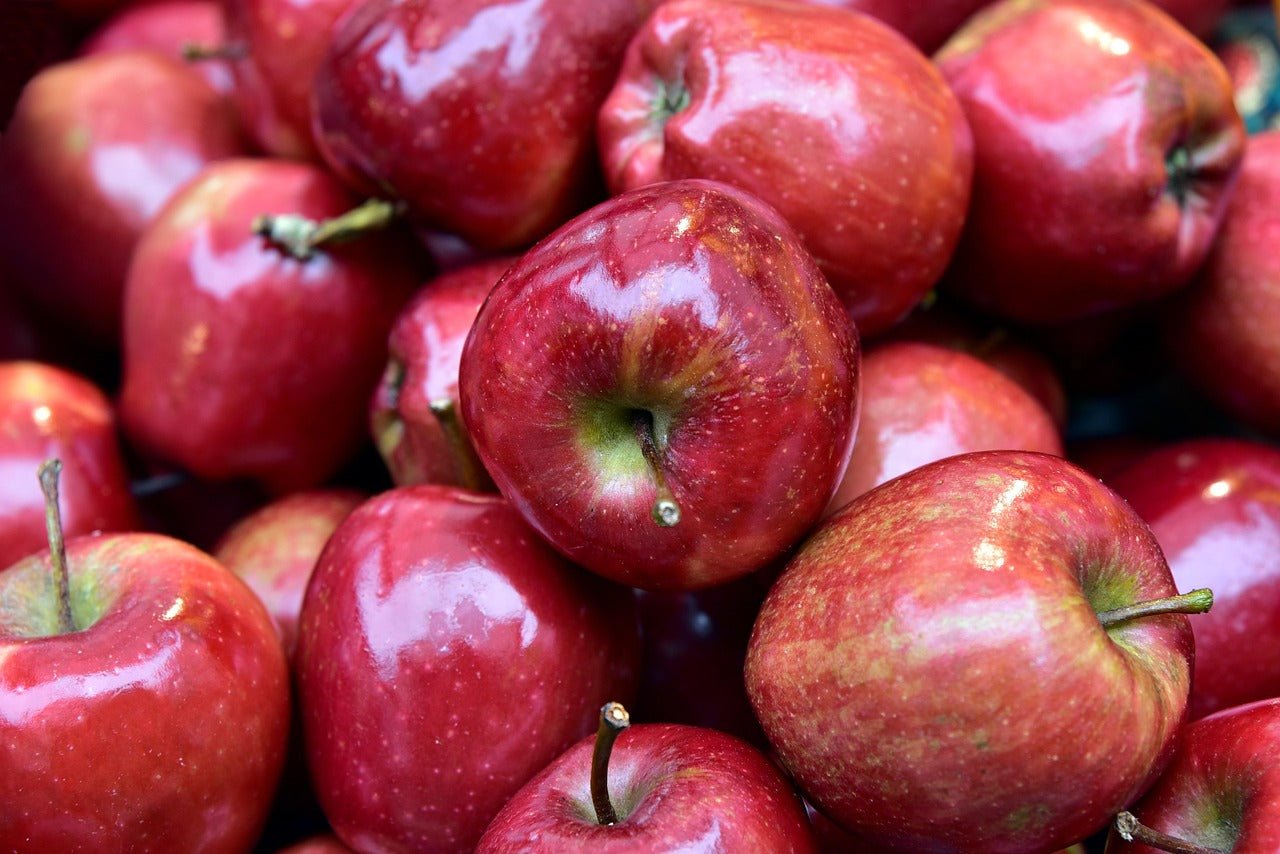Your Cart is Empty
FREE Worldwide Shipping! | +1 365 654 6605
FREE Worldwide Shipping! | +1 365 654 6605
December 04, 2023 4 min read

As the seasons change and autumn arrives, the abundance of fresh apples is a true delight. Whether you've recently gone apple picking or purchased a variety of apples from the grocery store, it's essential to know how to store them properly to maintain their freshness and flavor. In this comprehensive guide, we will explore various methods and techniques for long-term apple storage, ensuring that you can enjoy crisp and delicious apples for months to come. Selecting the right apple varieties is crucial when it comes to long-term storage. Opt for tart and thick-skinned varieties such as McIntosh, Fuji, Rome, Granny Smith, or Northern Spy. These apples are known for their excellent keeping qualities and can last for months when stored properly. Avoid sweeter and thinner-skinned varieties like Delicious or Gala, as they tend to have a shorter shelf life. When picking apples, handle them gently to prevent bruising and damage. Even a small nick or bruise can spoil the entire batch of apples, so it's essential to use only pristine apples for long-term storage. Damaged apples can be eaten fresh or used for cooking to avoid any wastage. Remember the saying, "One bad apple spoils the whole bunch," and remove any rotting or damaged apples to prevent them from affecting the others. Maintaining the right temperature and humidity is key to preserving the freshness of apples. Ideally, apples should be stored at a temperature between 30 and 35 degrees Fahrenheit with a relative humidity of 90 to 95 percent. If you have a small quantity of apples, the refrigerator can serve as an excellent storage option. Place the apples in the crisper drawer, either in a perforated plastic bag or covered with a damp paper towel to maintain humidity levels. For larger quantities of apples, look for a cool and dark area with relatively high humidity, such as a cellar or garage. It's important to keep the temperature close to freezing but not below. Wrapping each apple individually in newspaper or kraft paper helps prevent them from touching and allows for better air circulation. Place the wrapped apples in crates or bins, ensuring they are arranged in a single layer for optimal storage conditions. Regularly check the stored apples for any signs of spoilage. Remove any apples that show rot or bruising to prevent them from affecting the others. It's advisable to use larger apples first, as they tend to soften faster than smaller ones. Additionally, different apple varieties ripen at different rates, so it's wise to store each variety separately to ensure optimal freshness. By maintaining a vigilant eye on your stored apples, you can enjoy their crispness for an extended period. While refrigeration and cool storage areas are the most common methods for preserving apples, there are alternative techniques worth considering. Controlled-atmosphere storage, or CA storage, is a time-tested method that involves regulating temperature, oxygen, carbon dioxide, and humidity levels to slow down the ripening process. This method allows apples to stay fresh for an extended period, sometimes up to a year. Another option is using specific solutions to prevent browning in sliced apples. Citrus fruits like lemons, limes, or oranges contain citric acid, which acts as a natural preservative and helps maintain the freshness of apple slices. Sprinkling apple slices with lemon juice or using produce washes containing citric acid can keep them from browning and maintain their appealing appearance. Can I store apples with other fruits and vegetables? It's best to keep apples separate from other produce, as they release ethylene gas, which can accelerate the ripening and decay of neighboring fruits and vegetables. How long can I store apples using the recommended methods? With proper storage conditions, apples can be kept fresh for several months. However, it's important to monitor them regularly and consume any apples showing signs of spoilage promptly. Can I freeze apples for long-term storage? Freezing apples is an option for long-term storage, but it's important to consider that the texture of the apples may change after thawing. Frozen apples are best used for cooking or baking purposes. Are there any alternative methods for preserving apples? Some people prefer canning or dehydrating apples as a means of preserving them for longer periods. These methods require additional equipment and knowledge but can be rewarding for those who enjoy homemade preserves or dried fruits. By following the proper techniques for storing apples, you can enjoy the taste of freshly picked apples throughout the year. Whether you choose refrigeration, cool storage areas, or alternative methods like CA storage or browning prevention solutions, the key is to maintain the right temperature, humidity, and handling practices. With these tips and tricks, you can savor the crispness and flavor of apples long after the harvest season has passed.Introduction
Choosing the Best Apples for Storage
Harvesting and Handling Apples with Care
Storing Apples in Cool Conditions
Monitoring and Maintaining Apple Storage
Exploring Alternative Apple Storage Methods
Frequently Asked Questions
Conclusion
References
Be the first to know about upcoming sales and promos. Get a 10% discount coupon when you subscribe!